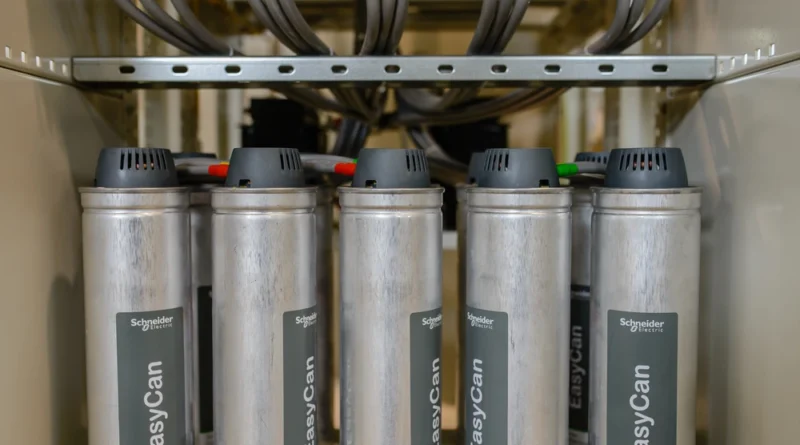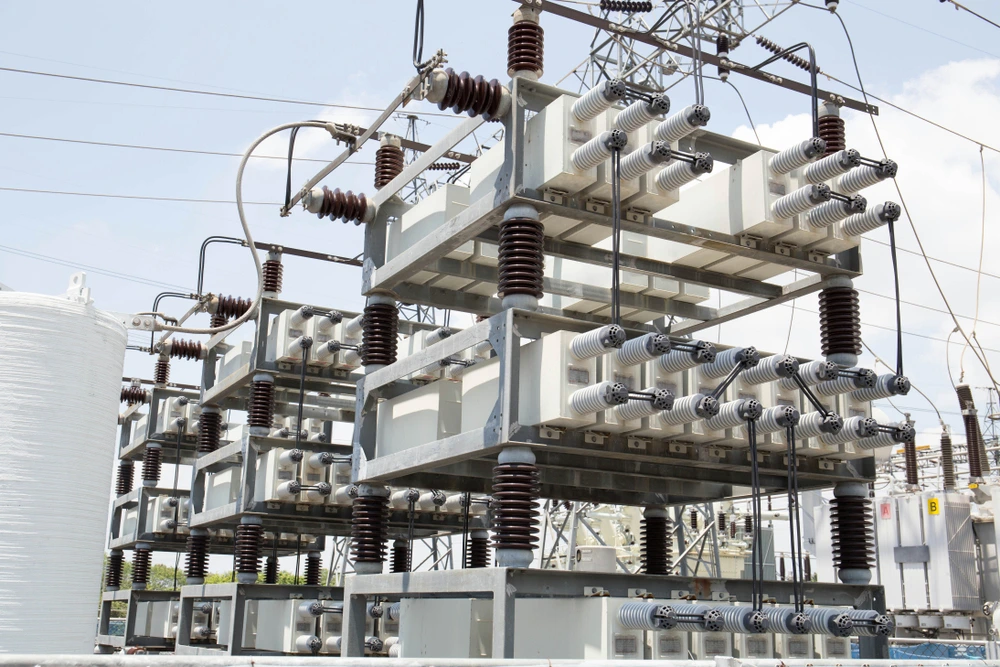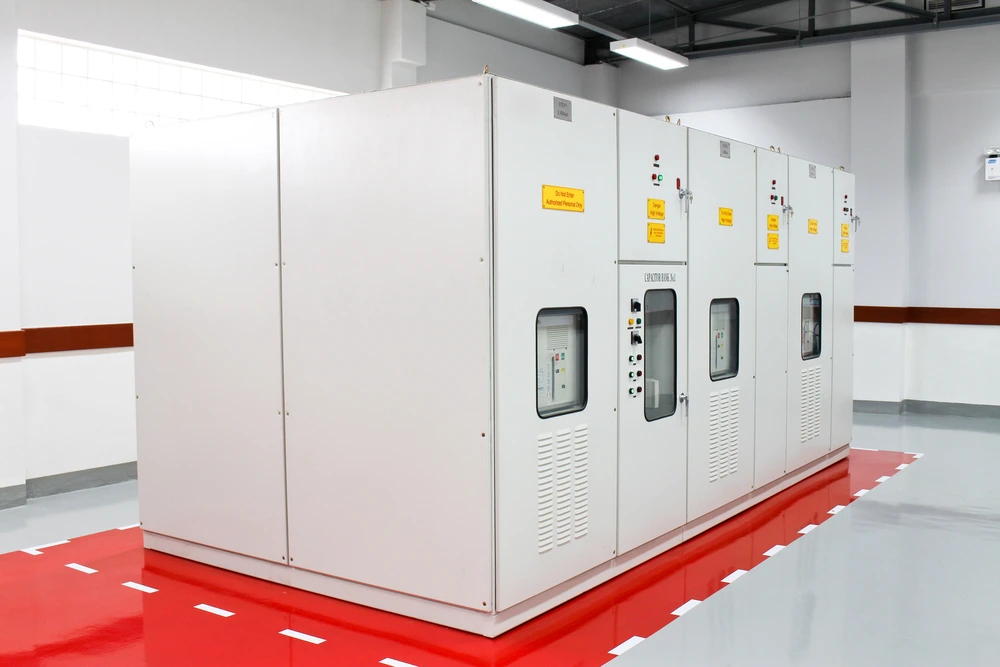
The search for optimal energy use and energy efficiency remains an ever-evolving challenge in the dynamic field of electrical engineering. At the heart of this effort is the capacitor bank, a critical and versatile component for improving power factor, stabilizing voltage and unlocking a range of benefits in electrical systems. This comprehensive investigation aims to unravel the intricacies of capacitor banks and delve deeper into their diverse applications, the numerous benefits they bring to energy efficiency and the critical considerations that ensure their seamless integration into modern energy distribution networks. Join us on this journey as we light the way to a more efficient and resilient electrical infrastructure through the understanding and strategic use of capacitor banks.
Capacitor bank in focus
Basically, a capacitor bank is an arrangement of capacitors connected in parallel or series that store and release electrical energy. These capacitors compensate for reactive power by working together to improve power factor and overall system performance.
The inner workings of capacitors
To understand the importance of capacitor banks, you need to understand how capacitors work. Capacitors store electrical energy in an electric field between two conducting plates. These capacitors charge and discharge quickly when connected to a power source. In this way, they contribute to voltage stabilization and minimize power losses in the electrical system.
Various applications of capacitor banks

Capacitor banks perform several tasks in electrical systems. They are fundamental in correcting the power factor and optimizing efficiency by reducing reactive power. Furthermore, they help regulate voltage, stabilize electrical networks and prevent oscillations. In certain applications, capacitor banks act as energy storage units, releasing quick bursts of energy when needed, such as in welding or pulsed power systems.
Power factor correction
Power factor correction is one of the main applications of capacitor banks. It is an important indicator for measuring energy conversion efficiency and can be significantly improved with the strategic installation of capacitors. This correction reduces reactive power, thus improving efficiency and reducing energy costs.
Voltage regulation
Capacitor banks play a central role in regulating voltage levels in the electrical network. They provide reactive power support, stabilize voltage fluctuations, and prevent voltage sags or spikes. This, in turn, contributes to greater power supply reliability.
Energy storage
In addition to power factor correction and voltage regulation, capacitor banks can serve as short-term energy storage solutions. In applications that require rapid bursts of power, such as welding or pulsed current systems, capacitor banks discharge quickly, providing the necessary power for a short period of time.
Advantages of capacitor bank integration
The integration of capacitor banks brings several advantages. Reducing reactive power leads to better energy efficiency, lower consumption and lower electricity costs. Capacitor banks also help extend equipment life by minimizing stress on machines. Furthermore, its integration ensures compliance with regulatory standards, helps maintain power factor limits and avoids penalties.
Better energy efficiency
The integration of capacitor banks brings tangible benefits in terms of energy efficiency. By reducing reactive power, these batteries optimize power factor, reduce energy consumption and lower electricity bills.
Longer equipment life
Stabilizing voltage levels using capacitor banks helps minimize stress on electrical equipment. This, in turn, extends the life of machines, which is particularly important in industrial environments where heavy equipment is part of the operation.
Regulatory compliance
In many regions, public utilities and industrial facilities are subject to regulations that establish power factor limits. Capacitor banks play a key role in meeting these legal requirements, ensuring compliance and avoiding potential penalties.
Key considerations and best practices

For optimal performance, capacitor banks must be carefully selected. Accurate sizing and positioning requires thorough analysis of the power distribution network. Regular maintenance, including inspections and preventative measures, is essential. Safety measures are of utmost importance and include proper grounding, isolation and adherence to industry standards to minimize risks associated with operating capacitor banks.
Accuracy in sizing and positioning
To benefit from capacitor banks, proper sizing and strategic positioning are essential. To determine the optimal configuration of capacitor banks, a comprehensive analysis of the power distribution network is essential.
Maintenance surveillance
To ensure the continued effectiveness of capacitor banks, regular maintenance and monitoring are essential. Regular inspections, testing and preventive maintenance help proactively identify and resolve potential issues.
Prioritize security measures
Safety should always be a top priority when working with electrical systems, and capacitor banks are no exception. To minimize associated risks, appropriate precautions must be taken, including adequate grounding, isolation, and compliance with industry safety standards.
Conclusion
In short, the capacitor bank is a beacon of innovation and efficiency in the ever-evolving landscape of electrical engineering. Capacitor banks feature unparalleled versatility, from their diverse applications in power factor correction and voltage regulation to their function as practical energy storage devices. The benefits they offer, from increasing energy efficiency to extending the useful life of equipment and complying with regulatory standards, highlight their indispensable role in modern energy distribution networks.
As we delve into the complexities of sizing, placement and safety measures, it becomes clear that capacitor banks are not just components, but integral architects of a more sustainable and resilient electrical infrastructure. Harnessing the power and potential of capacitor banks is not just a technological choice, but a commitment to shaping a future in which energy is used with precision, efficiency and environmental responsibility. Capacitor banks are proving to be devices and catalysts on this path to electrifying the future, catapulting us into a new era of electrical excellence.
Common questions
How do capacitor banks help save energy?
Capacitor banks improve energy savings by optimizing power factors, reducing reactive power and reducing overall energy consumption. This results in greater energy efficiency and cost savings.
What general signs indicate the need to install a capacitor bank?
High energy bills, voltage fluctuations and equipment failures are common signs. Power quality analysis can help determine the need for capacitor banks to resolve these issues.
Are there environmental aspects associated with capacitor banks?
Although capacitor banks are environmentally friendly, proper methods of disposing of old or defective capacitors are essential to minimize potential environmental risks. Compliance with disposal guidelines ensures responsible environmental practices.
How can capacitor banks be effectively sized and placed in a power distribution network?
The size of capacitor banks must be determined based on power factor correction requirements, and their placement requires thorough analysis of the network. Properly matching capacity to load requirements and strategic positioning ensures optimal performance and efficiency.

